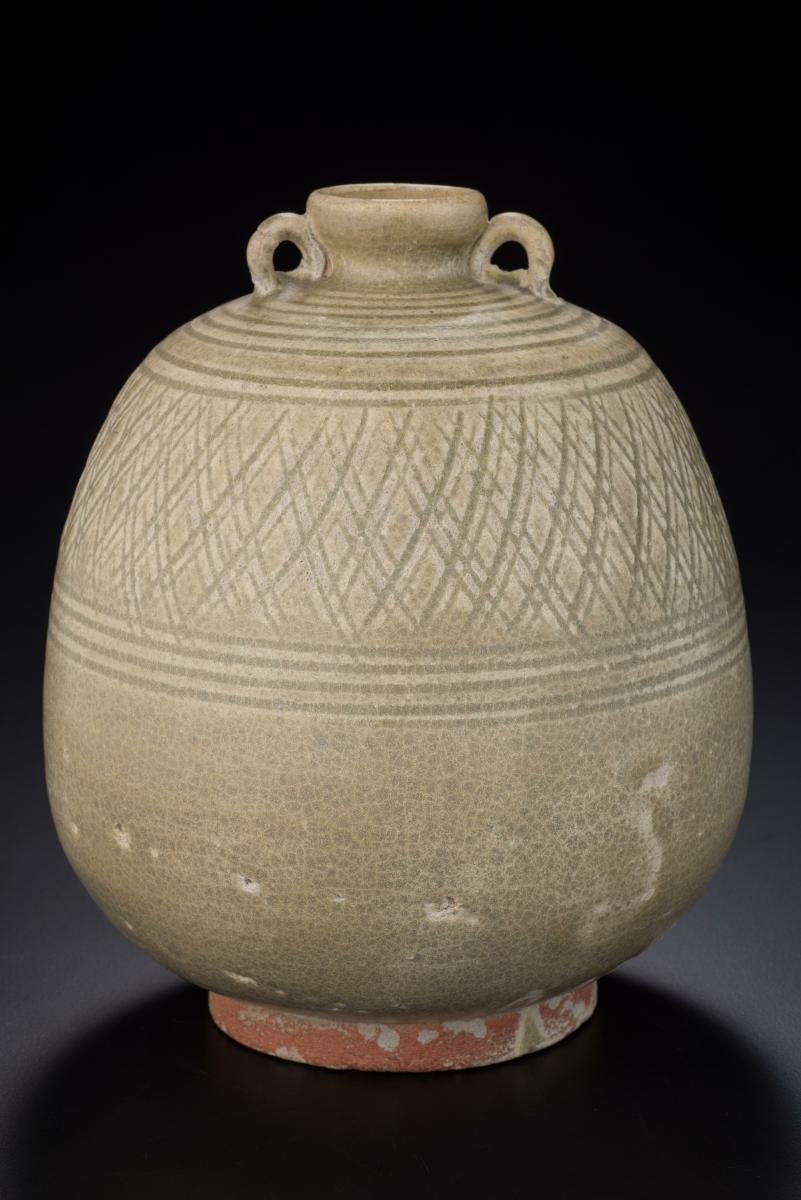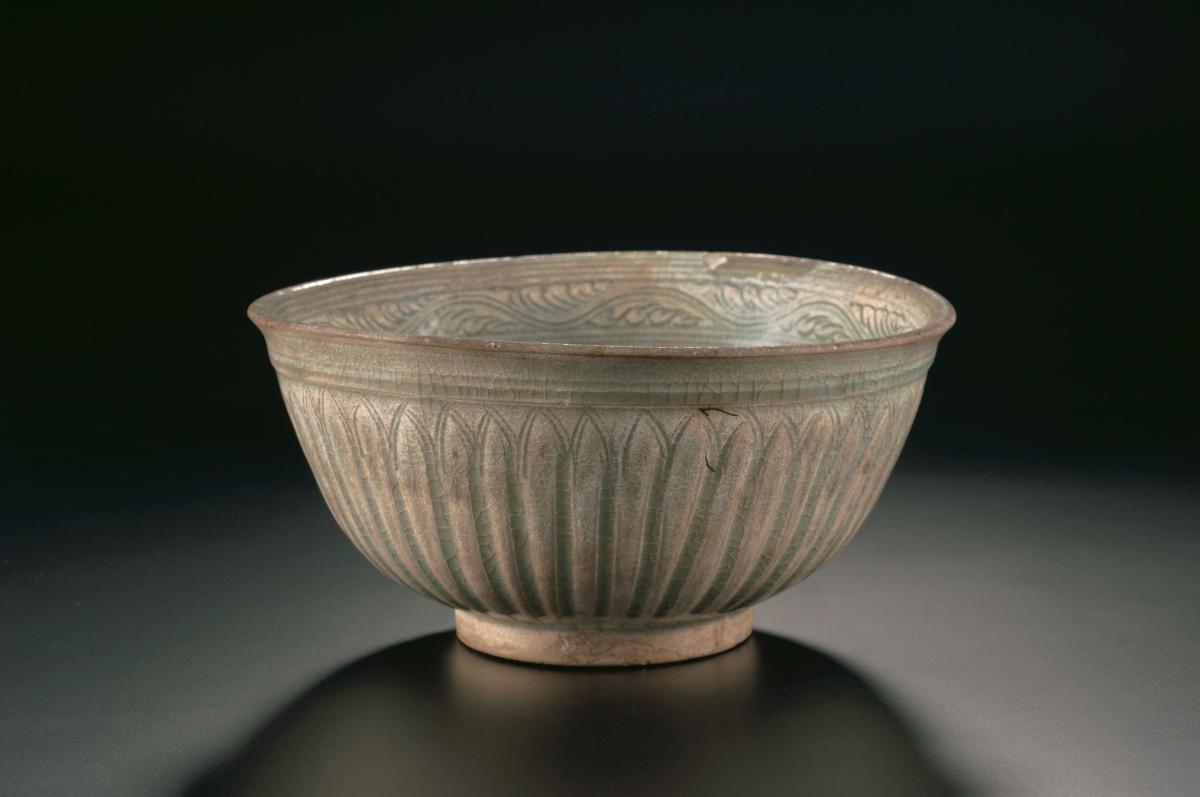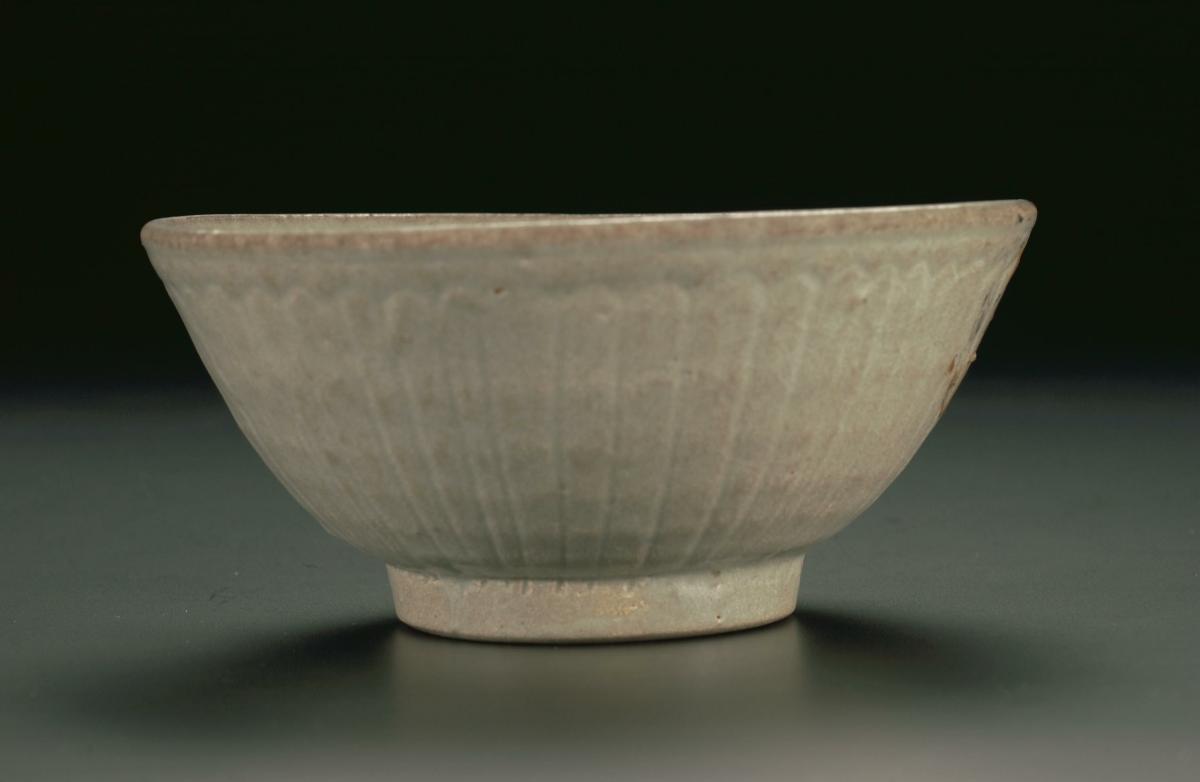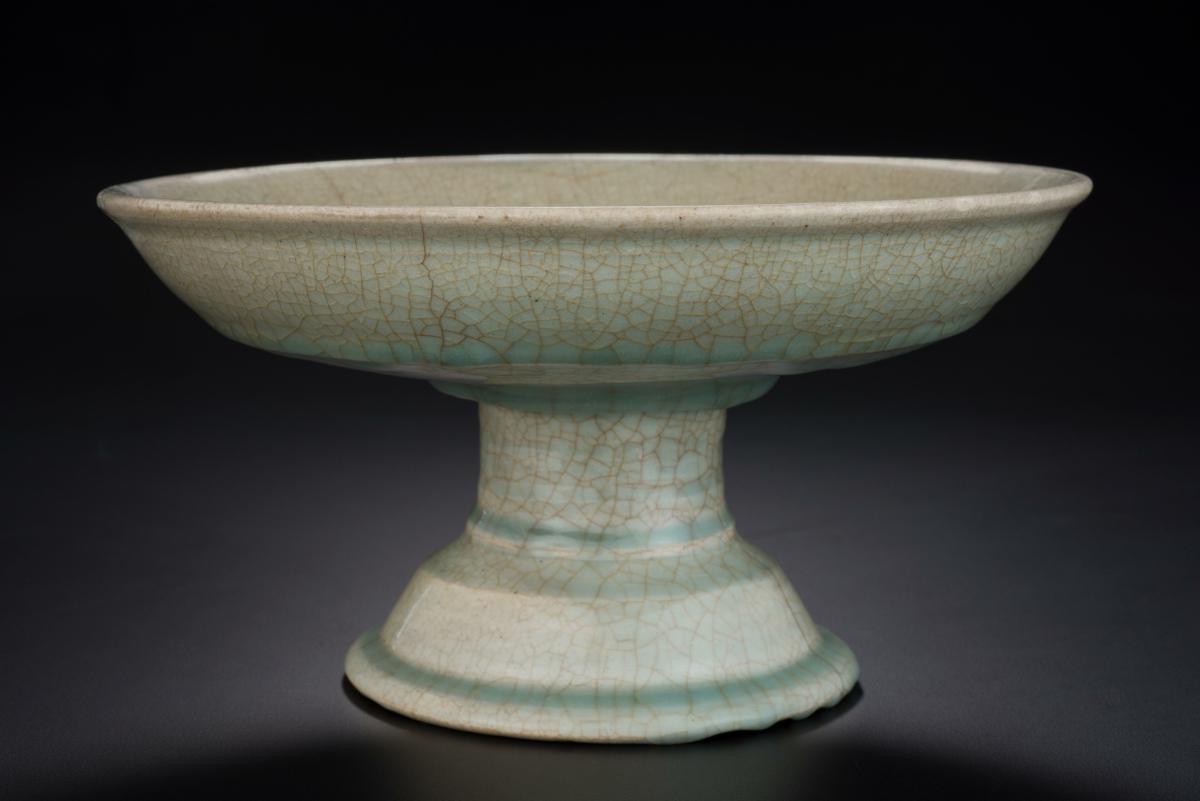This globular stoneware jar has a tapered body with ring handles on the shoulder and a narrow mouth. It is incised with cross-hatched decoration and covered in a celadon glaze which ends just above the short raised foot.Greenware was one of the main products of the Sawankhalok kilns. It was very similar to Chinese celadons of the Longquan kilns in Zhejiang province. During this period, a wide range of celadon wares was produced including jars, pouring vessels and dishes. Many of these were made for export to Java, Sulawesi and the Philippines.Celadon is a French term taken from the character of a shepherd in a 17th century play, who wore a green costume.The term refers to green-glazed wares, where naturally occurring iron oxide reacts to the lack of oxygen during firing in the glaze by turning green. Green-glazed wares in Thailand were probably introduced from China during the early 14th century.The royal cities of Sukhothai and Si Satchanalai in north-central Thailand were at the heart of one of the largest ceramic-producing centres in Southeast Asia during the 14th century. Si Satchanalai, which was later renamed Sawankhalok, came to refer to ceramics that originated from either of these two areas.















